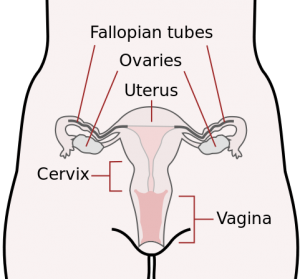[retweet][facebook]
Acupuncture and herbs clear fallopian tube obstructions and restore fertility. Researchers from the Maternal and Child Health Care Hospital of Puyang City tested a four part Traditional Chinese Medicine (TCM) protocol for restoring fallopian tube patency. The acupuncture and herbal medicine protocol led to the successful clearing of hydrosalpinx and other fallopian tube obstructions. In addition, the acupuncture and herbal medicine protocol outperformed a control group receiving medications.
 Clinical results for clearing the fallopian tubes varied between the TCM and medication groups. The TCM group receiving acupuncture and herbal medicine had a total effective rate of 90%. The group receiving medications had a total effective rate of 68%. For the acupuncture and herbal medicine group, 53% of patients experienced a total recovery, 37% experienced effective relief, and 10% of patients did not respond to care. For the medication group, 42% of patients had a total recovery, 26% experienced effective relief, and 32% of patients did not respond to care.
Clinical results for clearing the fallopian tubes varied between the TCM and medication groups. The TCM group receiving acupuncture and herbal medicine had a total effective rate of 90%. The group receiving medications had a total effective rate of 68%. For the acupuncture and herbal medicine group, 53% of patients experienced a total recovery, 37% experienced effective relief, and 10% of patients did not respond to care. For the medication group, 42% of patients had a total recovery, 26% experienced effective relief, and 32% of patients did not respond to care.
The pregnancy rate varied between the acupuncture plus herbs group and the medication group. Patients receiving acupuncture plus herbs had a 65% pregnancy rate following treatment. The medication group patients had a 38% pregnancy rate. The peak pregnancy rate was achieved within three months after completion of the treatment regimen.
Two-hundred patients with fallopian tube obstruction related infertility were equally and randomly divided into two groups. The Traditional Chinese Medicine group received protocolized care of acupuncture, cupping, oral intake herbal medicine, external poultice herbal medicine, and an herbal enema. The purpose of the enema is to absorb herbal medicines into the reproductive system through the intestines. A Traditional Chinese Medicine maxim is that the large intestine is the “friend of the uterus.” This reflects the fact that the large intestine and uterus are physically beside each other and run parallel in one part of the body. The enema is a form of herbal medicine application to the affected region.
Filiform acupuncture needles that were 1.5 inches long were vertically inserted to the primary acupoints. Needling was applied such that the needling sensation extended to the perineum for Zigong, Qihai, and Zhongji. All other acupoints were manually stimulated with mild reinforcing and reducing methods. After removal of the acupuncture needles, cupping was applied to Ganshu for ten minutes.
The TCM group took an herbal formula orally. The TCM principle was to improve qi and blood circulation, remove blood stasis, and to dredge the meridians. Administration of the herbal formula began on the third day after completion of menstruation. Ten bags of herbs were used for each patient per month.
The TCM group received herbs daily, starting from the third day after the completion of menstruation. The herbs were soaked in warm water for thirty minutes then boiled for an additional fifteen minutes. Patients consumed 200 ml of decocted herbs, three times per day. The herbal medicine dosages were standardized but were adjusted based on the needs of individual patients.
The herbs were decocted in 150 ml of water and cooled to 37˚C. Patients were instructed to defecate prior to the enema, which was applied at night. Patients rested in a lateral position while a disposable enema bag was used to apply the herbal medicines. Patients were advised to relax for the three to four hour retention time. Enemas were applied once per day, except during menstruation. Ten days comprised one course of treatment. The remaining solid herbs following decoction were placed in a cloth bag at approximately 40˚C. They were applied as a poultice bilaterally to the lower abdomen twice per day for thirty minutes each time. In summation, the TCM group received acupuncture, oral herbal medicines, cupping, herbal enemas, and herbal poultices.
The medication group received 160,000 IU gentamicin, 5 mg of dexamethasone, 4,000 IU chymotrypsin, combined with 20 ml of saline. The medications were applied daily until ovulation to comprise one course of treatment. Three courses of treatment were applied.
The study provides consistent clinical and objective measure improvements. Fallopian tube patency was tested using fluid backflow measurements and gas flow measurements. The researchers tabulated the data and concluded that the TCM protocol is highly effective for the treatment of fallopian tube obstruction related fertility. In addition, pregnancy rate improvements confirm the conclusions based on the fluid and gas flow findings.
If you live in Glen Rock, Ridgewood, or Paramus New Jersey, please contact us for a consultation and treatment!
Excerpt from:
Acupuncture and Herbs Clear Fallopian Obstruction Infertility
